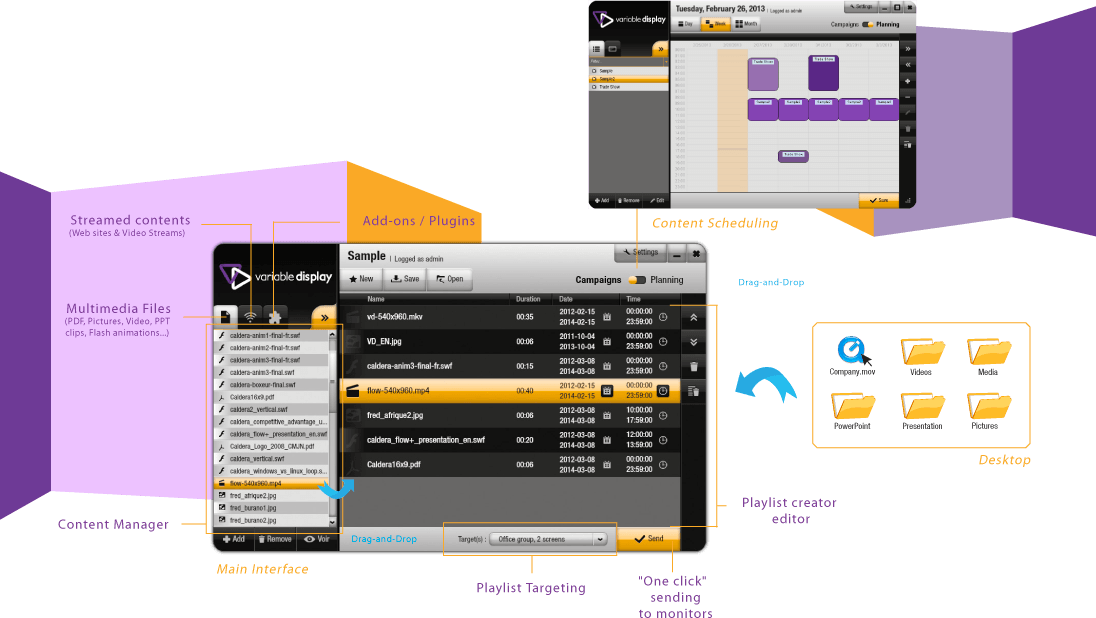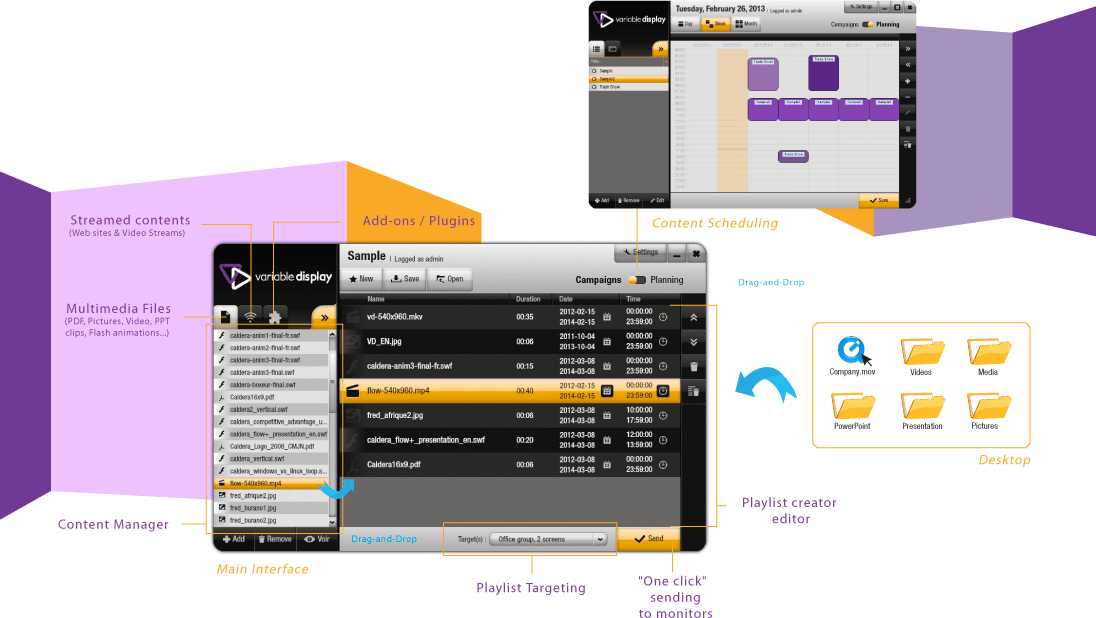
Mainstream Sign Software Firm Maturing Its Digital Signage Offer
February 26, 2014 by Dave Haynes

There are quite a few people who see the mainstream sign printing industry as a natural market to break into with digital signage software, given that we’re already seeing static signs like menu boards going digital.
But here’s an interesting wrinkle – a software company that has serviced the mainstream wide-format printing for 20 years marketing a digital signage software suite.
Called Caldera, and based in Strasbourg, France, the company does stuff like Print & Print-To-Cut Workflow for LFP, True Adobe PDF Workflow, Colour Management, Automated Workflow, Cost Management, and LFP Business Management. I even know what some of that is.
But the company has also been evolving a signage software suite called Variable Display, so much so it is now making noice about version 3.0.
From the company website:
With the appeal of its digital signage suite now extending beyond the print houses it was designed for, developer Caldera has announced a powerful new version upgrade. Variable Display 3.0 represents a major functionality boost for adopters, adding remote hardware monitoring, screen layout features and a Flash customization service to help deliver hard-hitting campaigns.
Many wide-format printers are already combining digital screens with printed point-of-sale materials and wall coverings to make convincing, integrated graphics content spanning print and digital. Users can now specify and place widgets on the screen, each containing live or static content to be run simultaneously within zones in the visual area. With Caldera’s much-liked drag-and-drop interface, v3.0 owners can create sophisticated templates for quick-service restaurants, retail and a variety of internal communications applications with a few clicks.
Development feedback from previous versions indicated that uptime was a key concern in digital signage installations. Caldera has converted this worry into a major positive in v3.0, adding a remote monitoring tool that observes behaviour across all networked players. Vital hardware statistics – including usage and temperature for the CPU, hard drive and motherboard – are collated within a simple interface that allows users to identify, pre-empt and resolve problems before they occur. This ability to provide superior client support and remote system administration is expected to be popular across the Variable Display user base.
An online, form-based template will also make it easier for novice operators to include the visual dynamism of Flash content within their installations, adding to existing HTML5 capability. An algorithm allows simple animations to be created using templates and saved within Variable Display as an asset, removing the complications of using cumbersome external Flash creators. Animated creative is broadly acknowledged to be more eye-catching than static for captive audiences, and Variable Display owners can now take advantage of this to improve dwell time and reactivity.“Variable Display is now crucial to many installations, from exhibitions and retail to corporate communications,” comments Sebastien Hanssens, vice-president marketing and communication, from Caldera. “Our development team continues to address the most important market shifts with each upgrade. While Variable Display was originally conceived as a way to help wide-format printers fight their way into new revenue streams, its sophistication is now making it one of the punchiest out-of-the-box options in the wider digital signage market.”
The HTML5 capability and advanced device management suggests this is not See Spot Run simpleton digital signage, but a real platform.
The company has a couple of booths at the Sign Expo trade show in Orlando in April, one in the little focused interest zone the ISA is calling the Dynamic Digital Signage Park.
!!!!!
The dynamic bit is added on, I guess, so it sounds profound and because someone decided printing people are too stupid to tell the difference between digital printing and digital screens. Sure they are.
Anyway, interesting to see that a company DEEPLY embedded in the printing industry has an evidently mature product that plugs into the existing workflow of printers. Maybe printing isn’t the greenfield vertical it’s widely thought to be, though I definitely think it’s a good one for the entry-level SMB stuff like Samsung’s smart panels.
One look at the floor plan for Sign Expo tells you few software and display companies are going hard after this bunch. Samsung and BroadSign are there, as well as distributors Almo and Ingram Micro, but no one new. Those guys were all there in 2013.
Not planning on going back in 2013. Orlando is pretty charmless unless you’re 12, or have time to golf, and 95% of the show floor would be foreign and irrelevant to digital sign people.



Leave a comment